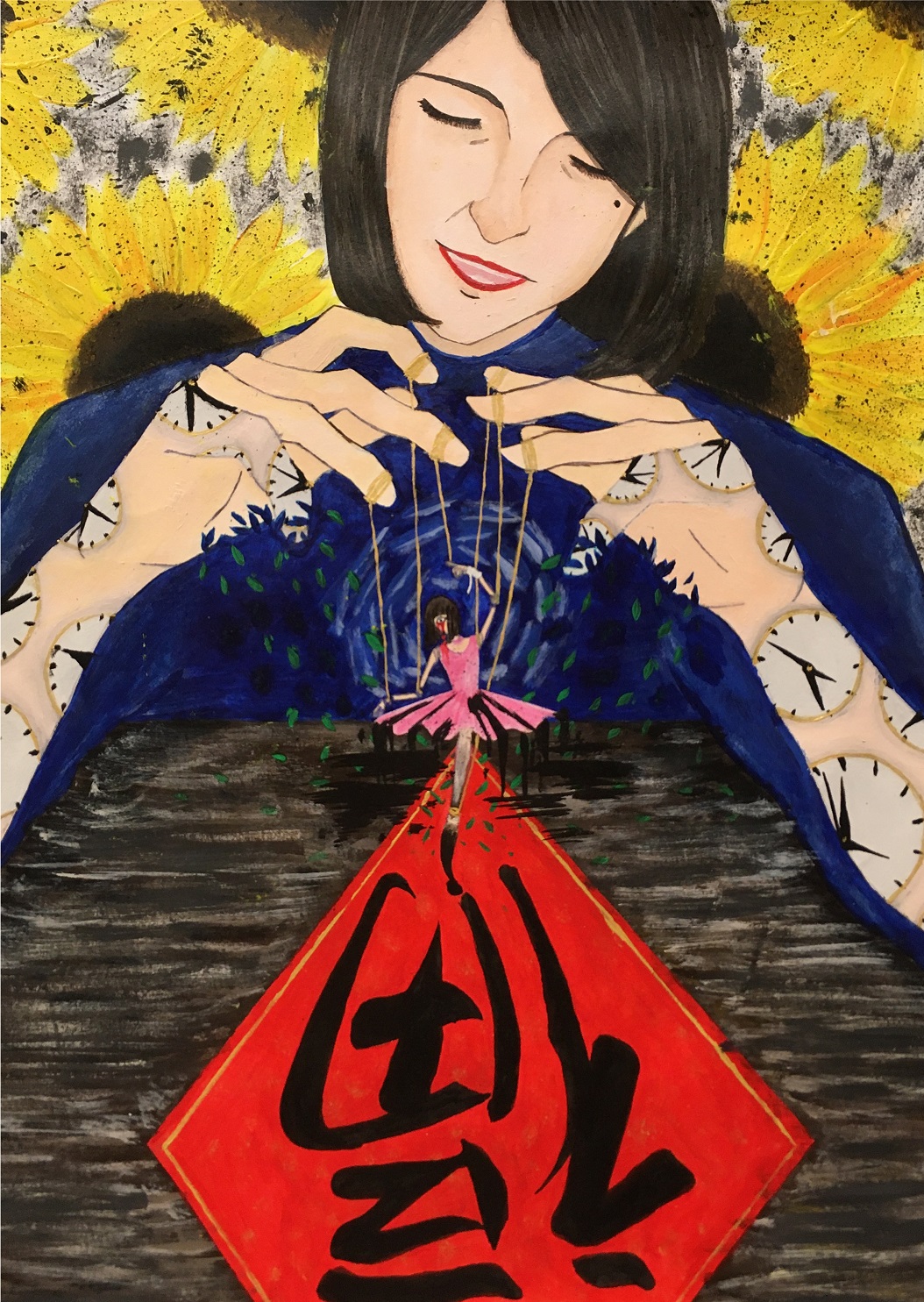
A visual representation of "The Calligrapher" by Mary Jean Chan
Aleena SADDEDI
Maryknoll Convent School (Secondary Section)
This painting focuses on a mother’s control over her daughter.
The mother is presented as a marionettist who controls the strings of a marionette.
The daughter, legs replaced with a calligraphy brush, is the marionette.
The mother figure towers over the daughter, while the daughter, bound by strings, is in distress.
Communication is nonexistent.
The daughter is crying but the Mother doesn't see.
The mother is focused only on making her ballerina perform the perfect dance.
The daughter has no mouth to complain. She knows her words will fall on deaf ears.
Clocks are embedded into the mother's arms.
Hour upon hour, she makes her marionette dance.
Time disperses into tea leaves, fluttering around the daughter as she pirouettes on red.
A typhoon of ink swirls behind them, and sunflowers pop out from it,
representing the Mother's enthusiasm, her satisfaction,
as her daughter moves around the red paper writing the character "Fortune",
gracefully like ancient poets, only one last stroke remaining.
However, dark ink stains the pink dress, depicting tainted innocence.
The daughter does not want this, nor does she possess the talent.
She is only doing what her mother expects her to do.
When facing someone so authoritative, the only choice the daughter has is to submit and obey.
The Calligrapher
Try grasping a piece of wood
between your thumb, middle
& ring finger – as if the drip-
dripping of ink was a typhoon
you could play in. Loosen the
right wrist, scrape the weight
of too-much from brush/heart
across ink bowl; let its round
rim reassure. Sculpt the brush-
tip till shrill: sharp as papercut.
Let ink seep: a dot, a line, then
a mad dash to the last stroke till
interlocking arms form terraced
paddies bursting with meaning:
the character fortune made up of
the shirt on your back, the roof
over your head & the promise
of a stomach satisfied with rice.
When people ask why, reply:
my mother wished I would
write with the grace of those
ancient Chinese poets whose
tapestry now slips easily from
my ten-year-old tongue into a
diptych of shapes. Hour upon
hour, my wrist aches as the ink
dries to a crust. My eyes blink
back water, but this is precisely
the moment to continue. Once
more the fingers dip, slide, lift.
I am not a dancer, but this is a
dance. Hours spill into a pot of
tea leaves as my mother tells me:
See how Chinese characters are
sunflowers that seek out the eyes.
Seeds of ink unfurl suddenly from
your wrist, blooming into time –
Mary Jean Chan
“The Calligrapher” was published in Flèche by Mary Jean Chan, pp.28-29. Copyrights © 2019 by Faber & Faber Ltd. Reprinted by permission of Faber & Faber Ltd, Bloomsbury House.